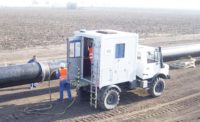Eccleston, engineer manager of product evaluation for Fluke Corp. (Everett, WA), personally examines every digital multimeter that arrives in his test lab after an accident. Figuring out the cause of failure can someArial take hours--or weeks--of painstaking investigation.
Eccleston's work, part of a movement throughout the test measurement tool industry to increase the safety of today's test tools, is paying off. Today, those working with the river of electricity that runs the modern world have available to them digital multimeters (DMMs) and other test and measurement equipment that can provide a real buffer between a routine job and one gone tragically wrong. But be warned, there also are millions of inexpensive versions of the same tools available that an untrained eye could mistake for the real thing.
Helping technicians know which is which is an integral part of Eccleston's job. "Each meter I receive means something has gone wrong somewhere," he says. "It's always a sad thing. That's why the real focus is on putting the effort in up front so an accident doesn't happen," he says.
The hazards of working with electricity aren't new, of course, but they are becoming more erratic and severe.
If you're well prepared, even if you wander into dangerous territory, your DMM will help handle an unexpected situation and provide a little cushion between you and an explosion. Because electrical dangers often carry no warning, Eccleston says, "a good meter could have saved your life and you would never know it."
For example, a technician may end up working with lines holding significantly more juice than he realizes. "We've heard of guys working on a 12,000-volt line thinking they were on a 480-volt line," says Randy Mather, DMM product manager at Fluke, who wrote much of Fluke's early works on safety standard education.
That's no exaggeration to one Riverside, CA, technician. The day started out routinely until the function knob blew off his digital multimeter on its way to an internal meltdown. In another case a Greensboro, NC, man was checking incoming voltage on a three-phase, 460-volt line when his DMM "made a loud bang and the selector knob flew past my friend's head," according to the safety report he filed.
Subsequent forensic investigation by safety engineers showed that the first man had used a DMM inadequately rated for the work he was performing. The second DMM failed because someone had replaced the original fuse with an incorrect one. These are among the most common causes of DMM accidents, Eccleston says.
Adequately designed modern multimeters have a number of features important enough to insist upon:
- Specially designed safety sand-fuses.
- Independent testing that verifies the internal spacing between critical components meets safety guidelines.
- A category rating appropriate for the job at hand.
Next month, Training Trends will discuss the various category ratings.
Rosemary Baisch is a product marketing manager with Fluke Corp. (Everett, WA). For more information, she can be contacted at [email protected].

